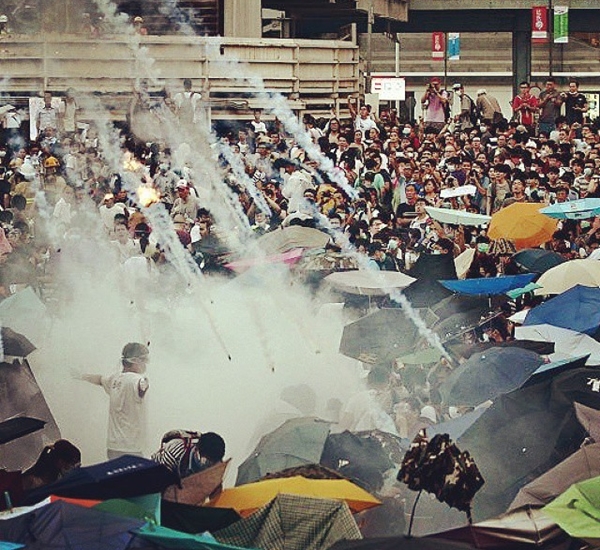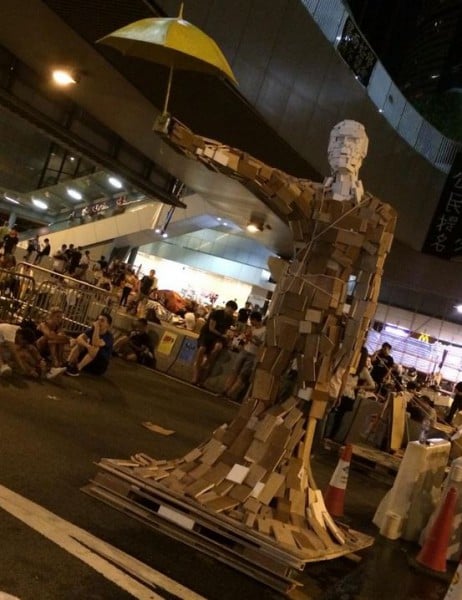Art World
Is Hong Kong’s Protest Art Worth Saving?
One group is going to great lengths to protect it.

Photo: @aamatller/Instagram.
One group is going to great lengths to protect it.

Alexander Forbes


Umbrella Man by a 22-year-old artist known only as Milk
Photo: @MuhammadLila via Twitter
In the month or so since protests broke out in Hong Kong’s central business district, the student movement’s art—almost as much as its umbrellas—has become a powerful pro-democracy symbol for the intrepid demonstrators (see “Artists Design Logos for Hong Kong’s Umbrella Revolution“). But, with authorities often on the edge of a crackdown on the protests that have clogged a swath of Hong Kong otherwise-bustling with economic activity (see “Hong Kong Protests Panic Auction Houses on Eve of Sales“), many have worried about what might happen to the artistic documents of the Occupy Central movement, should they be dispersed.
The Umbrella Movement Art Preservation Group is working hard to quell those fears. According to a report by the AFP, the group was formed by theater blogger Meaghan McGurgan who has organized teams to surge into the central business district and salvage as much of the movement’s protest art as possible, should a crackdown occur. “Their job is to call me,” if any action stirs up, McGurgan tells the AFP of the protesters monitoring police activity. “I can then mobilize the rescue teams standing by.”
Principle among the artworks McGurgan’s group hopes to save is Umbrella Man. The 12-foot-tall sculpture was created by a 22-year-old known only as Milk and stands at the heart of the student protesters. He’s constructed out of numerous wood blocks and holds a yellow umbrella, the more-or-less official symbol of the Occupy Central movement. Protesters have employed umbrellas throughout their resistance to fend off tear gas and water canon attacks by authorities.
According to the report, McGurgan and her supporters would then move salvaged artworks to the storage facilities of a network of over ten unnamed galleries. The Umbrella Movement Art Preservation Group initially contacted several museums in Hong Kong, asking for their assistance but found little support for their cause. “They either didn’t get back to us, or said they wouldn’t take the art as it was political. I thought that was really sad,” McGurgan told the news agency.
A Challenge Devising a Preservation Plan
Other pieces, such as a wall of Post-it notes known as Lennon Wall have proved more challenging in terms of devising a preservation plan. McGurgan’s group has photographically documented the wall extensively. They hope that, in the worst-case scenario, they would be able to reconstruct it later on.
Such preservation efforts are extremely important to Hong Kong’s future, according to artist Kacey Wong. He told the AFP that if the city takes a future path as “grim” as things currently appear, “then the children 25 years from now should be able to look back on a world that was highly civilized and full of hope.”
To that end, the Umbrella Movement Art Preservation Group has begun assembling a digital archive of as much material as they can gather from the protests. They hope that, even if all the Occupy Central movement’s art is destroyed, this archive can serve to remind future generations of the struggle for democracy that it has come to represent.